Freshwater Delivery in the Wake of Natural Disasters
A sample of water technologies invented to store, ship and provide one of the most critical resources for crisis recovery.
By Emily Bouckaert
Circle of Blue
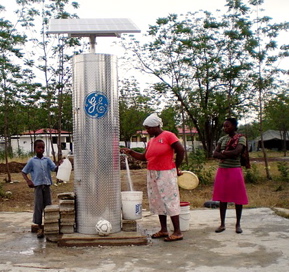
After a natural disaster, safe drinking water is always among the most urgent needs. Without it, health conditions deteriorate. Illnesses spread quickly.
That’s why having equipment in place that makes it easier to provide water is so crucial in disasters. Water transportation and purification technologies, say authorities, should be part of the rapid response solution in emergencies. Early forays into commercial applications for such equipment have been unsuccessful, said Pacific Institute President Peter Gleick. But he sees enormous potential for them in crisis situations.
“If we were smart enough to pre-position these kinds of resources,” Gleick said, “either large bags for moving water or small scale technologies that are capable of treating large quantities of water quickly, I think we’d do much better at preventing, or at least reducing, the impacts of natural disasters.”
Here are some useful new tools:
SunSpring™
The SunSpring™ is a solar powered water purifier created by the small Colorado-based company Innovative Water Technologies (IWT). Each unit is equipped to produce microbiologically purified water from a variety of poor quality inlet sources including rivers, wells, lakes, ponds, ditches and recycled rain water.
SunSpring™ uses a General Electric Homespring Central Water Purifier that effectively removes bacterial and viral pathogens, as well as particulate matter from contaminated water, to meet the water quality standards of the U.S. Environmental Protection Agency. GE Homespring™ units have been used for disaster relief in the aftermath of the tsunami in Southeast Asia in 2004, Hurricane Katrina in 2005, and the earthquake in Sichaun, China in 2008. Andrew Warnes, senior channel manager at Pentair Residential Filtration (a GE-Pentair Joint Venture), said that the units need electricity to operate, sometimes limiting their ability to function in disaster relief efforts.
“It was always a desire on our part to go completely off the grid with this technology,” Warnes said.
Meanwhile Jack and Carmen Barker, owners of IWT, found a way to power the purifier off the grid. They reinvented the GE Homespring by combining it with a solar panel and creating a unit that could be filter water entirely independent of an electrical grid. Recently, the Sunspring™ units have been put to work in the field to help satisfy the great need for safe water in Haiti after the January earthquakes. Fourteen units have been donated to relief efforts in Haiti, each with the capacity to provide water to almost 10,000 people. Ten of these units were donated by the GE Foundation to the Clinton Global Initiative. CGI sent the Sunsprings to UNICEF, which finally forwarded them to Esperanza—a sustainable development organization—making a chain of noteworthy Sunspring™ supporters. Additionally, Jack Barker is leading the installation team and training NGO Esparanza on the ground in Haiti to maintain the units for the long term.
One of the next major concerns in Haiti’s recovery is the threat of widespread waterborne illness, according to Warnes. IWT has created a real-time interactive map that pinpoints the sites of the donated units.
“The intent behind these sites is to create a necklace or a string of safe havens surrounding medical facilities so that those sites don’t have to worry about ongoing water supply,” Warnes said.
The Sunspring™ can filter 19,000 liters of water per day and last ten years, making it one of the most permanent drinking water solutions for disaster recovery.
Spragg Bags™
Spragg Bags™ are giant cylindrical bags designed to transport freshwater around the world. For the past 22 years, Terry G. Spragg & Associates have been developing and refining the water bag technology.
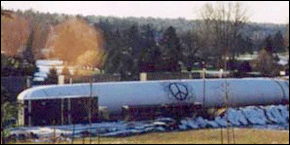
A test voyage in the Pacific Ocean was conducted in 1996, transporting freshwater from Port Angeles, Washington to Seattle. Each bag can hold about 770,000 gallons of freshwater. More than 1.5 million gallons were transported during the test voyage with two 230 ft bags. The Spragg Bags ™ are connected by ultra strong zipper technology and “towed” in trains.
“The key to the whole system is the connection system. The zipper system gives you the ability to modulate,” inventor Terry Spragg told Circle of Blue.
As suggested in a recent blog entry by the Pacific Institute’s Peter Gleick, in emergency situations empty bags could be transported with safe drinking water to nearby sites.
Spragg is confident in the technical merits of his water bags.
“The economics are easy to calculate, the technology is easy to demonstrate; it’s the politics of water that have been the most difficult part of my process,” he said.
Terry Spragg’s next goal is to run another test voyage demonstration, this time between Northern and Southern California. He hopes the test voyage gives investors the data and evidence they need to support Spragg Bags.™
WaterBox
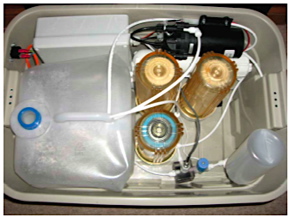
Deveopled by professors and former students from Brunel University, the WaterBox was created for disaster relief. The purifying system can filter approximately 15 liters of water per day, which fulfills daily water needs for about 15 people.
According to WorkingwithWater.net, the WaterBox system uses two carbon filters, a reverse osmosis filter, and ultraviolet light to purify water. The WaterBox is also equipped with a meter that triggers automatic cycling of water back to the holding tank if it doesn’t meet the necessary standards.
The system can be powered by electricity from the grid or by solar panels.
While the WaterBox is designed as a short-term water purifying solution, Dr. Mark Atherton told WorkingwithWater.net that the WaterBox is intended to be recycled.
“A team based around very able mechanical engineering students had a vision for the WaterBox to be the best affordable western technology made quickly available for a disaster situation, and then retrieved and made ready for the inevitable next time occurrence.”
Currently, the creators of the WaterBox are seeking investors for the project.
Historically, individuals and governments alike have struggled with targeted planning to fund and distribute technologies like the SunSpring™, Spragg Bags™ and WaterBox before disaster strikes. Relief only pours in after major events. The retroactive response is more expensive, and slower. A whole spectrum of organizations, and generous individuals, usually help make ends meet. The pattern held in the recent earthquakes in Haiti and Chile, but it’s not a permanent solution.
“I think we need to set up effective, permanent disaster response in all aspects of disaster. Not just water, but also in food and health,” Gleick said. “To rely on overstressed and overstretched non-governmental agencies just isn’t the most effective way to deal with it.”
Carefully positioned water transportation and treatment technologies could be part of that permanent solution.
Emily Bouckaert is a reporter for Circle of Blue. You can reach her at circleofblue.org/contact

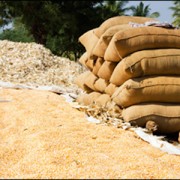
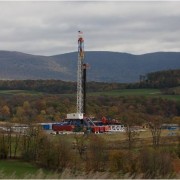





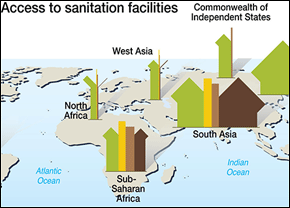
Awesome invention! I love how when other countries are in need the U.S. always steps in to save the day. Hopefully, one day they will do the same for their own.
Some interesting products.
There is no mention of air water generators (harvest water from the humidity in the air). They are by far the most effective and safest solutions to urgent water supply as they require no setup, very little room and provide there own storage.
We dealt with Iniciativas De Paz- a Puerto Rican not-for-profit company- in mobile clinical facilities serving thousands of people that
required medical attention ranging from a bandaid and vitamins to lifesaving procedures.
Plant by plant, pound by buck, those in our area
continue to connect to Haiti two years after a
dreadful quake in 2010 left tens of thousands dead and also a lot more damaged as well
as homeless. Blon stated it’s very easy to fail to remember that Haiti
is simply a four-hour flight from New york city.